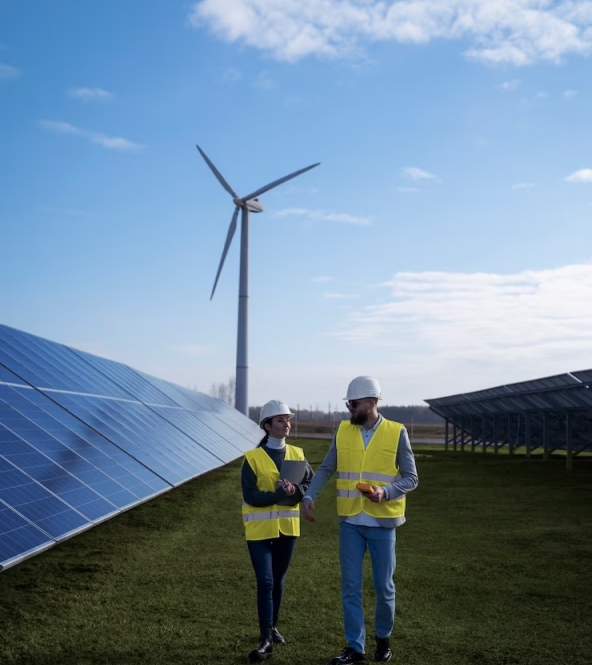Common Solar Panel Defects and How to Avoid Them

Solar power dominates the renewable energy market in Australia, with over 3 million households having rooftop solar panels. As the solar demand increases and more solar brands emerge, some manufacturers are cutting production costs to compete, potentially increasing the chances of producing solar modules that fail prematurely.
But you don’t need to worry. In this blog, we will talk about all the solar panel problems and solutions. So get ready as we delve into the common defects that can occur with solar panels and provide practical tips to prevent them.
What are the common solar panel defects, and how to avoid them?
-
Manufacturing Defects
Manufacturing Defects are the issues that arise during the production of solar panels. Let’s look at some of the solar panel defects due to manufacturing errors:
- Micro Cracks
Thanks to the technical advancements in the semiconductor industry, you can find more wafer-thin solar cells in the market. While they weigh less and look better, these modern super thin cells can become brittle or get microcracks. It can affect panel efficiency and cause larger cracks over the period. - Hot Spots
Solar panels work to produce electricity from the sunlight it absorbs. The resistance in the solar cells converts electricity generated into heat losses. However, if the solar cells have solar panel problems such as cracks, poorly soldered joints or mismatches, it can increase the resistance of one cell compared to another and lead to the formation of hotspots with time.
Hot Spots can speed up the degradation of back sheets and panels by causing burnt marks. If you leave them unchecked for a long time, it can start a fire. - Cracked Cells
Cracked Cells are crucial solar panel defects that happen during manufacturing. It occurs when cracked solar cells get accidentally laminated due to the absence of effective quality control in production. It can cause a mismatch in cells, affecting energy generation.
Prevention Tips:
- Purchase your solar panels from reputable manufacturers that follow strict quality control processes.
- Only opt for high-quality panels from reputable brands.
- Conduct an independent inspection for any visual solar panel defects before installation.
- Micro Cracks
-
Installation Error
Even after purchasing the best solar modules, you can face common solar panel problems due to installation errors.
- Shading
Shading or partial shading from trees, buildings, or other things can significantly affect system efficiency. - Improper Mounting
If the solar panels are not mounted properly, they can detach or shift. It affects the panel’s efficiency or even roof damage. - Incorrect wiring and grounding
Faults in wiring and grounding can lead to voltage drop, power loss or even fires. Similarly, inadequate airflow can overheat the panels and affect efficiency. - Mismatched Hardware
Solar panels don’t function without appropriate inverters and connectors. However, if the installer uses the mismatched hardware, it can cause an energy mismatch and electricity stress on all the system components. Thus, it degrades the whole solar panel system over the period.
Prevention Tips:
- Choose a certified and reliable installer.
- Request a detailed installation plan and ask questions about mounting and wiring before installation.
- Ensure your installer conducts a site assessment to give you the best installation plan.
- Shading
-
Environmental Factors
Environmental factors like extreme heat, cold and hail storms are one of the main solar panel problems, affecting their efficiency and lifespan. Some of the crucial issues include:
- Dust built up
Dust and debris built up over the panels’ edges can significantly reduce energy production in the long run. Especially when your solar modules are installed at a slight angle or flat roof, the rainfall tends to get collected over them and leave dust residue after evaporation. - Broken Glass
The impact from debris and strong weather conditions like hails can break the front glass of the panel that protects the panels. Due to this, dust and moisture can seep inside the cells and cause solar panel defects, reducing modules’ performance and efficiency.
Prevention Tips:
- Choose the panels that fit your local climate conditions, preventing common solar panel problems.
- Implement a regular cleaning schedule if you reside in dusty areas.
- Opt for a high-quality solar panel that can withstand extreme weather conditions.
- Install your solar panels at an angle that allows natural cleaning during rainfall.
- Dust built up
-
Degradation Overtime
Solar panels tend to reduce efficiency throughout their lifespan. Although this degradation is natural, it can accelerate due to solar panel defects and harsh environmental conditions.
- Potential Induced Degradation (PID)
Solar panels are often placed in series to create enough voltage for running solar inverters. However, humidity and heat can lead to high voltage differences between solar frames and PV cells. It can degrade the solar cells and reduce energy generation. - Snail Trails
If your solar panels have broken solar cells or microcracks, the localised heat and moisture can lead to the migration of silver nanoparticles on the surface to form discoloured patterns known as Snail Trails. It affects the aesthetics of the solar panels and reduces energy production.
Prevention Tips:
- Always choose high-quality panels with a lower degradation rate.
- Consider anti-PID technologies while selecting solar panels and inverters.
- Ensure secure installation to prevent common solar panel problems that boost degradation.
- Perform regular maintenance and inspection to spot any solar panel defects and work effectively.
- Potential Induced Degradation (PID)
Conclusion
Solar panels are a long-term investment. While most solar brands offer a warranty of over 25 years, you should check everything to avoid issues of solar panels not working or lacking efficiency.
We hope the points above help you to identify and prevent common solar panel problems.




